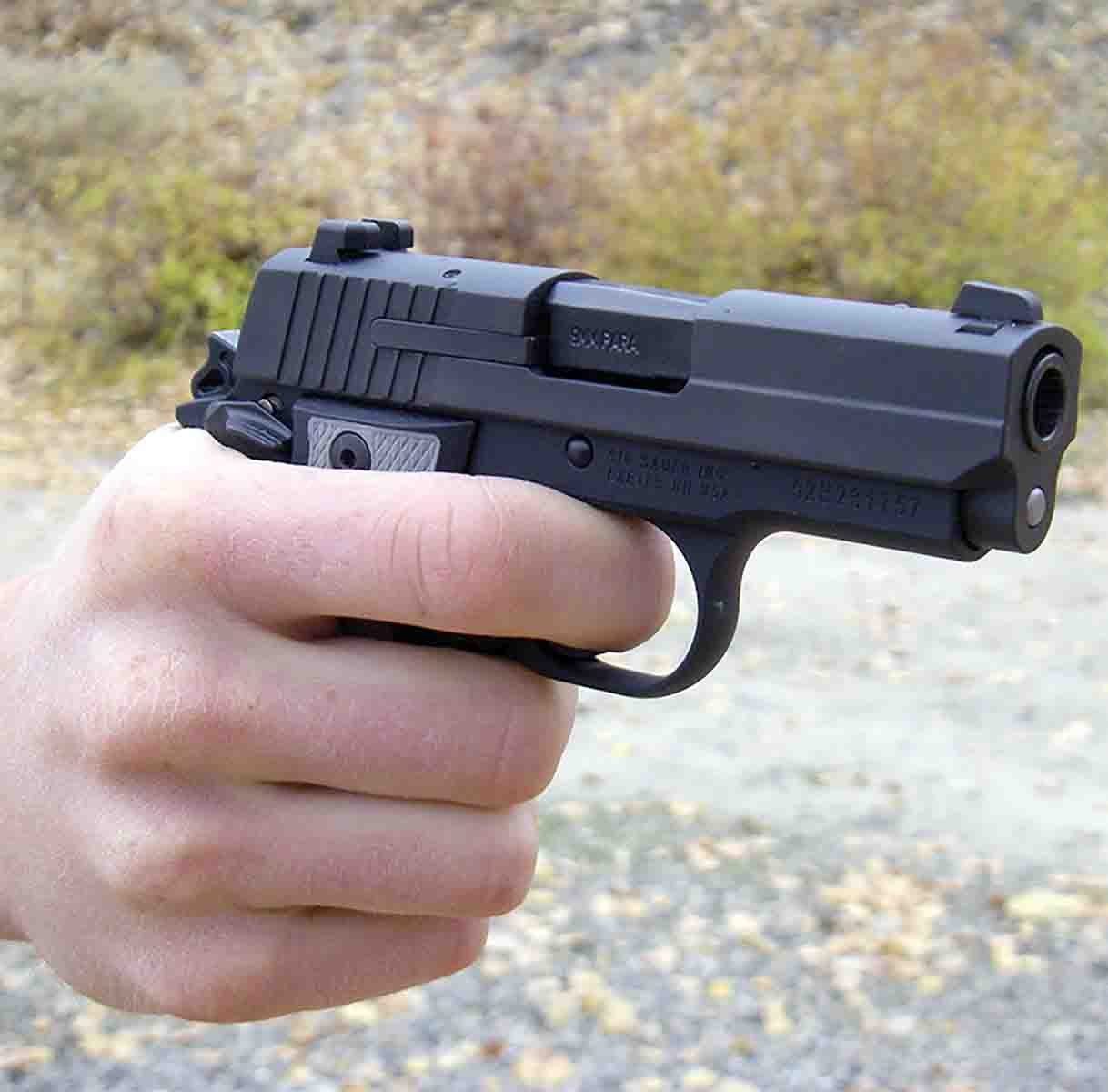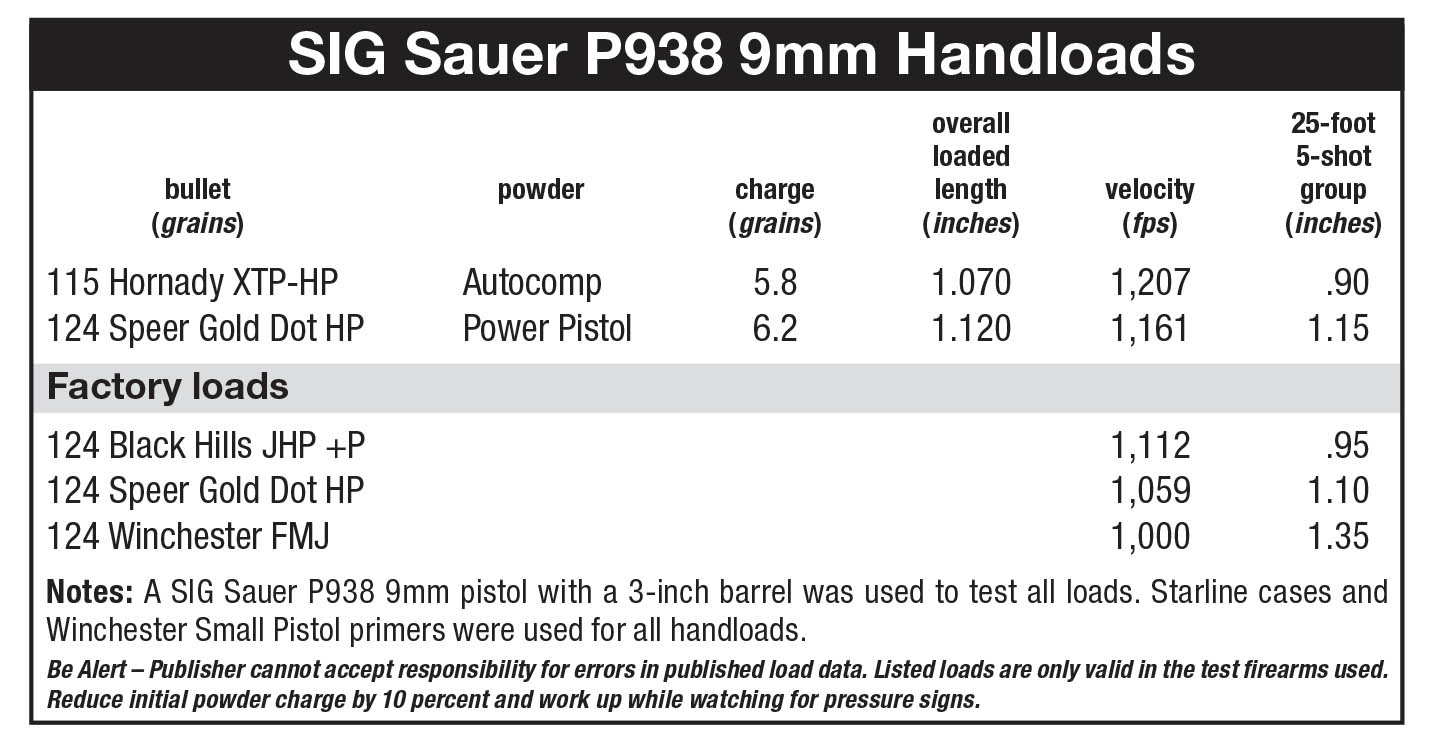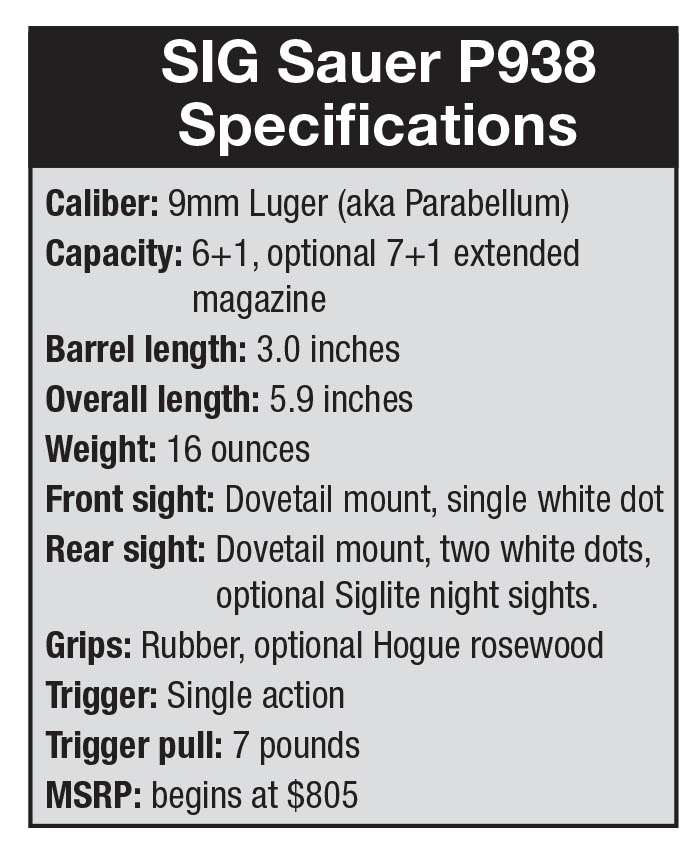From The Hip
SIG Sauer P938 9MM Luger
column By: Brian Pearce | February, 18
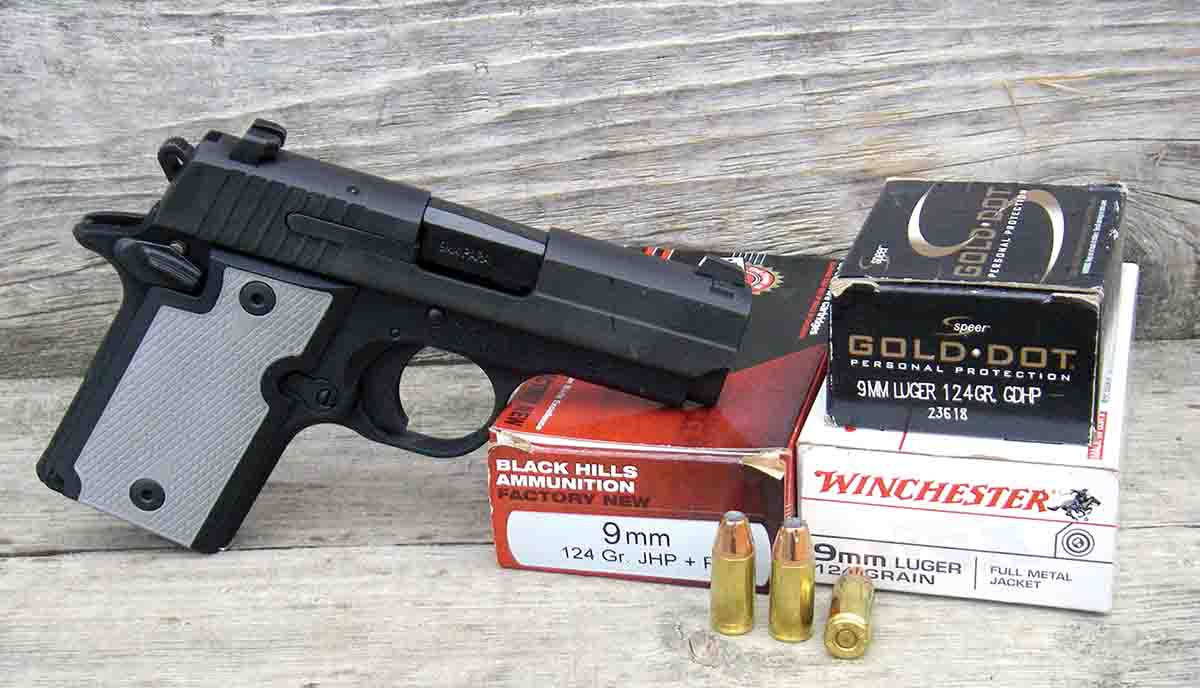
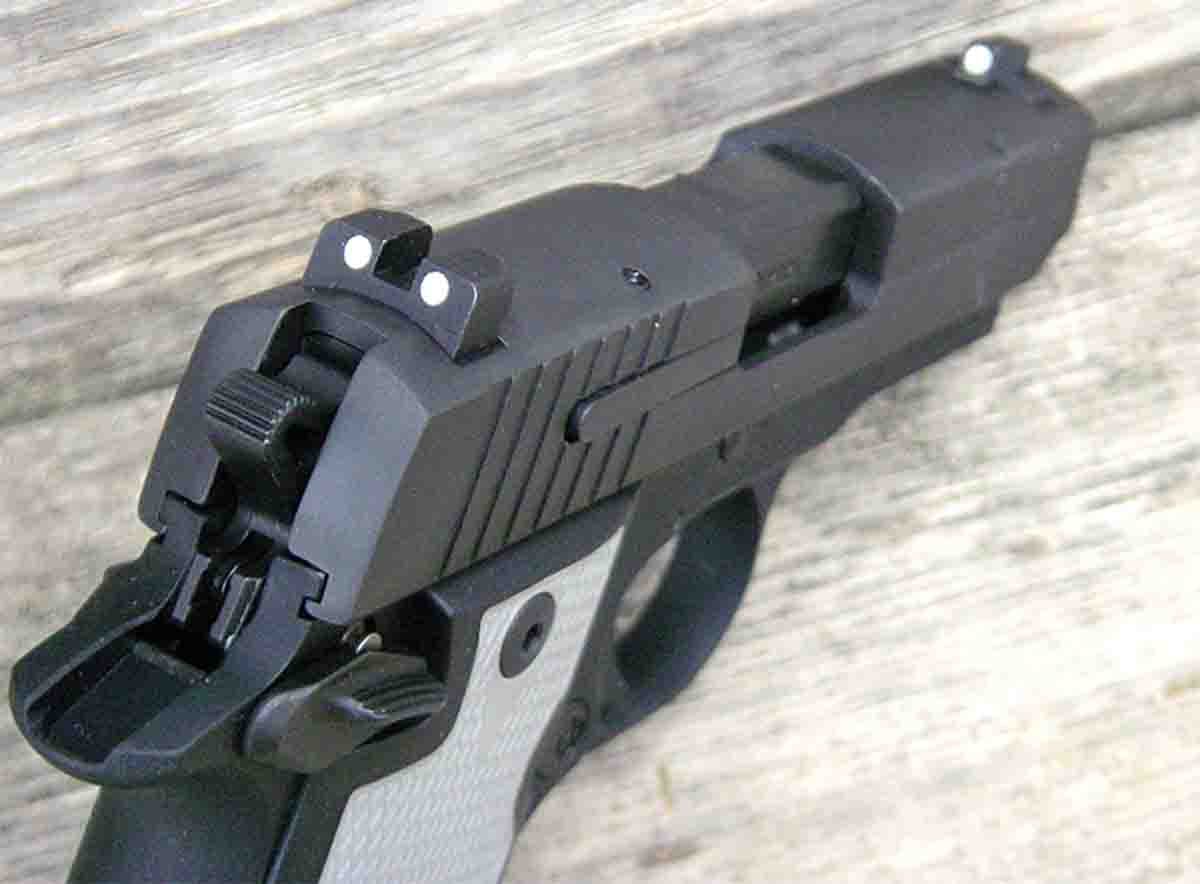
The P938 features an ambidextrous safety that engages positively. One functional departure (when compared to full-size Model 1911s) is that the slide can be racked open while the safety is in the “on” position. Incidentally, the firing pin is an inertia pattern, so when the hammer is fully forward and resting on the firing pin, the pin does not make contact with the primer, and neither will a strike or blow to the hammer cause the gun to fire. Some people will prefer to carry the P938 in this manner rather than in the cocked-and-locked mode. In spite of the small hammer spur, I had no difficulty in cocking the hammer with reasonable speed while drawing the gun and firing in a single motion. With that said, the cocked-and-locked position is the best method to carry this gun, making it faster to draw and get into action. It should be noted that SIG Sauer recommends
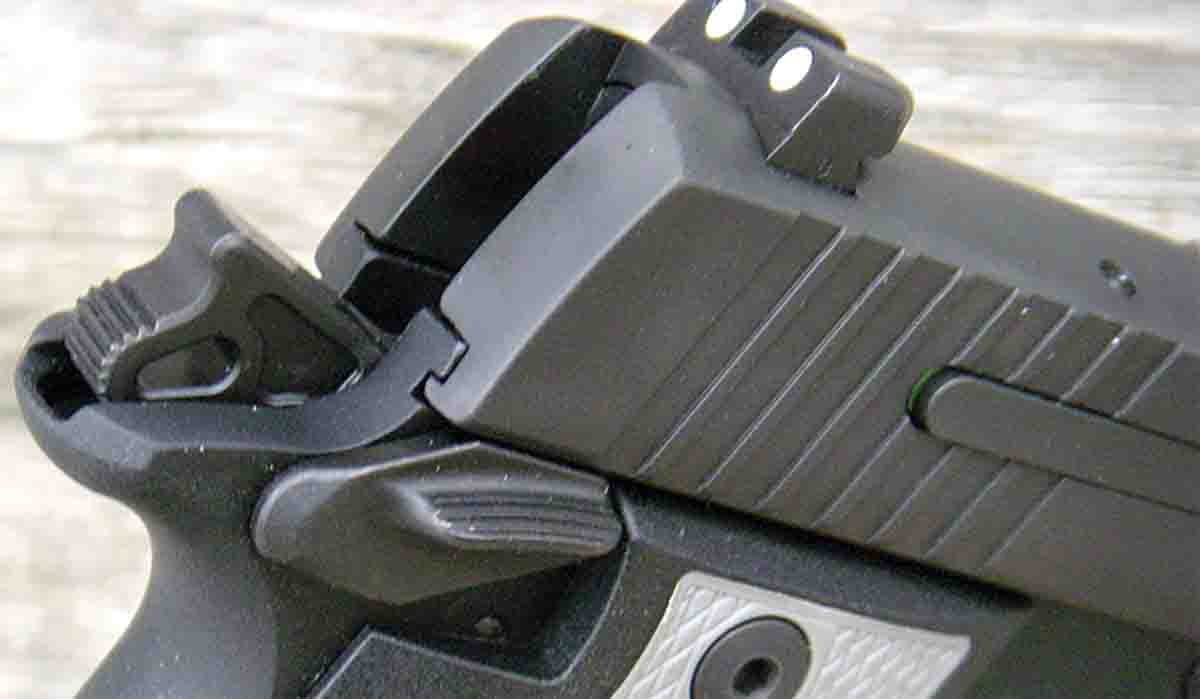
The ambidextrous safety is unobtrusive but is easy and natural to manipulate with speed. Incidentally, there is no grip safety, which would be an undesirable feature in a subcompact defensive gun.
Both the front and rear sights are dovetailed into the slide to help stand up to recoil, which also serves for windage adjustments. The rear sight features two large white dots while the front is likewise enhanced with a single large white dot. When viewing the sight picture, there is plenty of light on each side of the front sight for quick target acquisition and accurate shooting. The rear face of both sights are angled forward to help prevent snagging when the gun is drawn. The forward edge of the rear sight is cut at 90 degrees in relation to the slide, which is a tactical feature that serves as a “hook” to cock the slide on any number of objects in the event that the gun must be cycled with one hand. Both sights are constructed of rugged tool steel to resist damage or abuse.
Scaling down an existing gun design is not as simple as it sounds, as they cannot just be reduced in size or they become out of proportion and awkward. The slide stop, magazine catch, trigger position, etc., are ergonomically correct for a gun of this size and felt completely natural to manipulate.
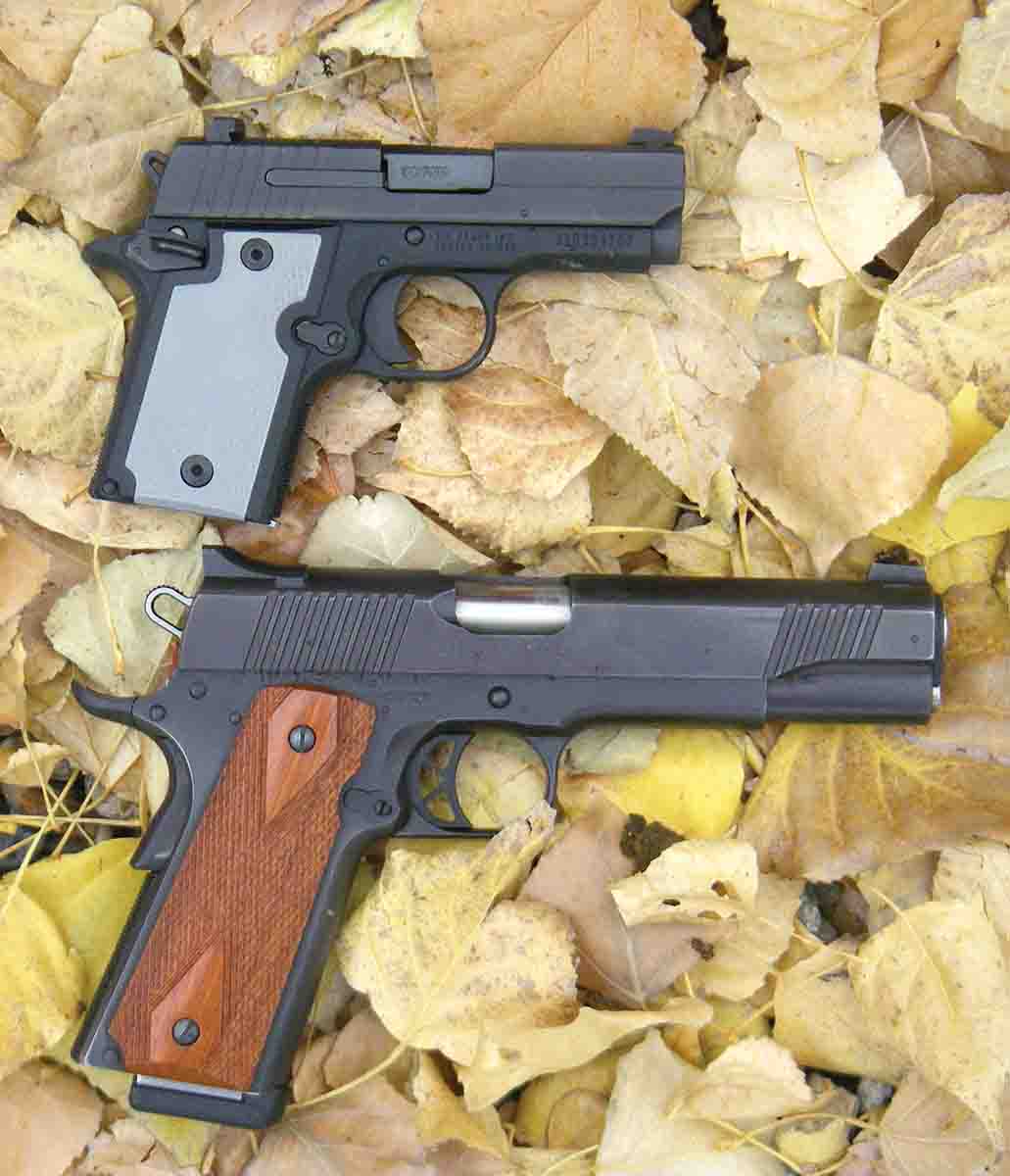
I have heard several shooters comment that the accuracy of the P938 was adequate but “average” (whatever that may mean). However, my test gun produced good enough accuracy to lay down 6-inch diameter steel targets offhand at 40 yards with some degree of reliability, but doing so required a fair amount of concentration to keep the sights on target while squeezing the heavy trigger pull (as well as requiring the right ammunition). My suspicion is that some shooters have not been able to get the utmost accuracy due to the pistol’s rather heavy trigger pull.
At 25 feet, a more normal distance for a compact defensive pistol to be checked for accuracy, bullets regularly clustered into a quarter-size, ragged hole, which is plenty accurate for a gun of this type and purpose. Of the three factory loads tried, Black Hills 124-grain JHP +P loads produced the tightest groups while Speer 124-grain Gold Dot HP ammunition was a close second.
In spite of the relatively short 3-inch barrel, all loads exceeded 1,000 fps, while the Black Hills 124-grain +P load produced the highest velocity at 1,112 fps.
Two handloads were also tried. The first included the Hornady 115-grain XTP-HP bullet seated to an overall length of 1.070 inches over 5.8 grains of Hodgdon Autocomp powder, assembled in Starline cases and ignited with Winchester Small Pistol primers for a velocity of 1,207 fps. The second handload consisted of a Speer 124-grain Gold Dot HP bullet seated to an overall length of 1.120 inches for a velocity of 1,161 fps using 6.2 grains of Alliant Power Pistol powder. In assembling these loads, the bullets were seated to their correct depth, then as a separate step a taper crimp was applied with a case mouth measurement of .369 inch. The accuracy of both handloads was good; they regularly produced ragged groups at 25 feet.
